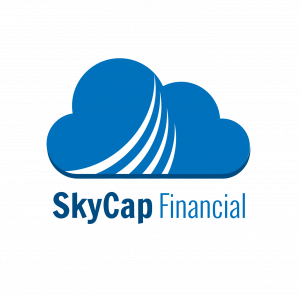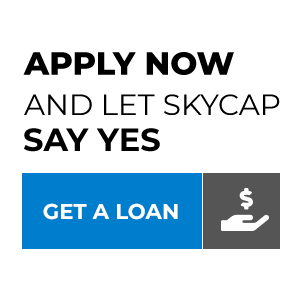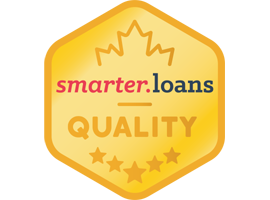Comprehensive Guide to Bad Credit Personal Loans: Approvals from $1,000 to $10,000
Obtaining a personal loan with bad credit can be difficult, particularly when seeking amounts up to $10,000. However, various lenders offer options tailored for individuals with poor credit. This guide provides an in-depth look at bad credit personal loans, loan amounts ranging from $1,000 to $10,000, and essential information to help streamline your application process.
1. Understanding Bad Credit Personal Loans
Definition and Purpose
Bad credit personal loans are unsecured loans designed to accommodate borrowers with subpar credit histories. These loans can be used for various purposes, including debt consolidation, emergency expenses, medical bills, and home repairs.
Why They Appeal to Borrowers
For individuals with poor credit, traditional loan options may be limited. Bad credit personal loans provide an opportunity to access needed funds quickly, albeit at higher interest rates, offering flexibility for essential financial needs.
2. Available Loan Amounts: $1,000 to $10,000
Smaller Loans: $1,000 to $2,000
Loans between $1,000 and $2,000 are easier to obtain for individuals with bad credit. These amounts are typically less risky for lenders, making approval more likely. They are ideal for covering short-term financial needs such as emergency repairs or medical bills.
Mid-Level Loans: $5,000
Loans around $5,000 require more stringent financial criteria, including stable employment and sufficient income. These loans can be used for larger expenses such as home improvements, educational costs, or travel.
Larger Loans: $10,000
Obtaining a $10,000 loan with bad credit is more challenging. Approval typically depends on higher income levels, employment stability, and occasionally, collateral. Lenders enforce stricter criteria for higher loan amounts to mitigate risk.
| Loan Amount | Typical Uses | Approval Likelihood |
|---|---|---|
| $1,000 – $2,000 | Minor medical expenses, small repairs, short-term needs | High |
| $5,000 | Home improvement, education, travel | Moderate |
| $10,000 | Debt consolidation, major repairs, significant life events | Low to Moderate |
3. Key Factors in Loan Approval
Income and Employment Stability
Lenders prioritize borrowers with stable incomes and secure employment. Consistent income streams, particularly for larger loans, greatly improve your chances of approval.
Credit Score and Debt-to-Income Ratio
While credit scores are essential, lenders also assess your debt-to-income (DTI) ratio. A lower DTI signals better financial health, improving your attractiveness as a loan candidate.
Lender-Specific Criteria
Each lender has its own approval criteria. Some may offer more lenient terms with higher interest rates, while others require more stringent conditions. Understanding a lender’s specific requirements can increase your chances of approval.
4. Interest Rates and Repayment Options
Interest Rates for Bad Credit Loans
Bad credit loans generally come with higher interest rates due to the increased risk lenders assume. Rates can vary from 12.99% to 39.99%, depending on the lender and loan amount.
Flexible Repayment Terms
Repayment periods typically range from 9 to 36 months, offering flexibility. Some lenders provide options for early repayment without penalties, allowing borrowers to save on interest costs.
| Loan Amount | Interest Rate Range | Repayment Term |
|---|---|---|
| $1,000 – $2,000 | 12.99% – 25% | 9 – 24 months |
| $5,000 | 15% – 30% | 12 – 36 months |
| $10,000 | 20% – 39.99% | 24 – 36 months |
5. Different Types of Bad Credit Loans
Secured vs. Unsecured Loans
Secured Loans: These loans require collateral, such as a car or property, reducing risk for the lender. Secured loans often have lower interest rates.
Unsecured Loans: These loans are based on your creditworthiness and do not require collateral. They generally have higher interest rates and lower loan amounts.
Personal Loans vs. Debt Consolidation Loans
Personal Loans: Versatile loans for a wide range of purposes, from emergencies to repairs.
Debt Consolidation Loans: These loans combine multiple debts into one manageable payment, often with a lower interest rate, helping simplify your finances.
6. The Loan Application Process
Required Documents
When applying for a bad credit personal loan, ensure you have the following documents ready:
- Government-issued photo ID
- Proof of income (e.g., pay stubs, bank statements)
- Proof of employment
- Bank verification details
Approval Timelines
Many lenders offer quick approval, with some loans being approved and disbursed within 24 hours. This depends on the lender’s processing times and business hours.
7. Managing Expectations: What You Need to Know
While bad credit personal loans are accessible, approval is not guaranteed. Lenders assess multiple factors, such as income stability and existing debt, and meeting the minimum requirements does not ensure approval—especially for higher loan amounts.
8. Loan Amount Search Trends and Their Importance
Analyzing search trends for specific loan amounts provides insight into borrower needs. Queries like “bad credit personal loans for $1,000,” “$2,000,” and “$10,000” reflect varying financial requirements. However, actual approval depends on individual financial circumstances, so it’s important to consider your situation before applying.
9. Tips for Improving Your Approval Chances
Enhancing Financial Literacy
Improving your financial knowledge can boost your chances of loan approval. Free resources, like SkyCap University, offer courses on budgeting, credit management, and financial planning.
Boosting Credit and Reducing Debt
Actions like paying down existing debt, making timely payments, and reviewing your credit report for inaccuracies can significantly enhance your loan approval chances.
Final Words
Bad credit personal loans can provide essential financial support, whether you need $1,000 or $10,000. Understanding loan options, the factors that influence approval, and taking steps to improve your financial standing can help you navigate the process more effectively. Approach loan applications with realistic expectations, and explore multiple lenders to find the best terms for your needs.






